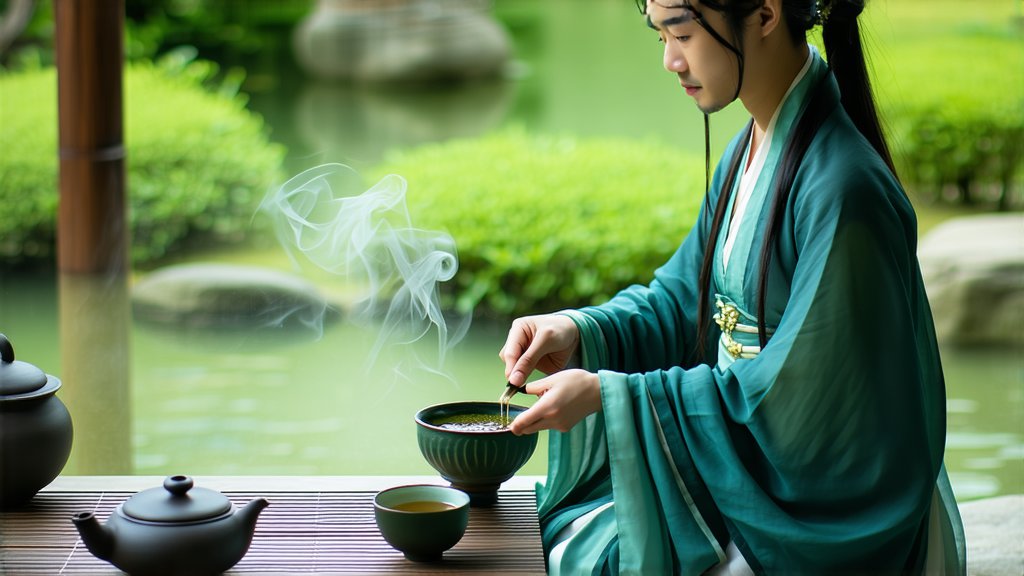
The world of tea is as vast and varied as the cultures it springs from, with each variety telling its own unique story through leaves, aroma, and flavor. Among the pantheon of esteemed teas, Tieguanyin Oolong stands as a beacon of complexity and elegance, embodying the artistry and tradition of Chinese tea culture. This article embarks on an exploration of Tieguanyin Oolong, delving into its rich history, diverse varieties, intricate production process, optimal brewing techniques, and the nuanced art of tasting.
A Glimpse into History
Tieguanyin, often translated as "Iron Goddess of Mercy," traces its origins back to the early Qing Dynasty in China, specifically within the Anxi region of Fujian province. Legend has it that the tea was named by a scholar in honor of a visit to a Buddhist temple dedicated to Guanyin, the Goddess of Mercy, where he discovered this exceptional tea. Its creation is attributed to innovative tea farmers who experimented with oxidation levels and rolling techniques, giving birth to a tea that would become one of the most revered in the Oolong family.
Varieties of Tieguanyin
While Tieguanyin is a distinct cultivar, it encompasses several sub-varieties, each with its own subtle characteristics shaped by factors such as terroir, climate, and processing methods. Some notable examples include:
-
Traditional (Conventional) Tieguanyin: Known for its complex floral and fruity notes, with a smooth, full-bodied texture. It undergoes a longer oxidation process, typically ranging from 20% to 30%.
-
Lightly Oxidized Tieguanyin: Also referred to as "Qing Xiang" or "Green Fragrance," this variant emphasizes fresh, vegetal, and floral aromas with a lighter, more delicate taste. Oxidation levels are kept below 20%.
-
Roasted (or Baked) Tieguanyin: After initial processing, these leaves are further roasted, imparting a deeper, toastier flavor profile with hints of caramel and nuts. Roasting also enhances the tea's storage potential.
The Artistry of Production
The making of Tieguanyin is a meticulous craft that involves several stages, each demanding precision and expertise:
-
Plucking: Only the tender buds and top two leaves of the tea plant are hand-picked, usually in the spring and autumn when the plants are at their peak.
-
Withering: The plucked leaves are spread out to wither under the sun or in a well-ventilated room, reducing moisture content and preparing them for rolling.
-
Rolling (Tossing): Leaves are repeatedly tossed, shaken, and rolled by skilled hands or machines to bruise the edges slightly, initiating oxidation and shaping the leaves into tight, spiral curls.
-
Oxidation: Depending on the desired flavor profile, the leaves are left to oxidize for varying periods. This step is crucial in developing the tea's characteristic aroma and taste.
-
Fixation: To halt oxidation, the leaves are quickly fired in hot woks or ovens, locking in their flavors and fragrances.
-
Roasting (Optional): For roasted variations, the fixed leaves undergo additional roasting to deepen their flavor and prolong shelf life.
-
Sorting and Grading: Finally, the leaves are sorted by size, shape, and quality to ensure consistency in the final product.
Brewing the Perfect Cup
To fully appreciate the depth and complexity of Tieguanyin, proper brewing is essential. Here's a guide to unlocking its potential:
-
Water Temperature: Use water heated to approximately 190°F (88°C). Higher temperatures can scald the delicate leaves, while lower temperatures may not extract enough flavor.
-
Tea Quantity: A general rule of thumb is to use about 5 grams of tea per 100ml of water. Adjust according to personal preference and the strength of your tea.
-
Steeping Time: Infuse the tea for about 15-30 seconds for the first brew, gradually increasing the time for subsequent brews. Tieguanyin is known for its multiple infusions, each revealing different layers of flavor.
-
Brewing Method: Traditional Chinese Gongfu Cha style is recommended, using a small Yixing teapot or Gaiwan (lidded bowl). This method allows for precise control over steeping times and temperature.
-
Savoring: As you pour the tea into cups, observe its color—ranging from pale greenish-yellow to a deeper amber hue depending on the variety and roast level. Sip slowly, allowing the flavors to unfold on your palate, noting the interplay of floral, fruity, and umami notes.
The Art of Tasting
Tasting Tieguanyin is an immersive experience that engages all the senses:
-
Appearance: Examine the twisted, dark green leaves unfurling in the cup, releasing their aromatic oils.
-
Aroma: Before sipping, inhale deeply to catch the complex bouquet of floral (such as orchid or osmanthus), fruity (like lychee or apple), and sometimes even creamy or buttery scents.
-
Flavor: On the palate, expect a harmonious balance of sweetness, slight astringency, and a lingering aftertaste that speaks of its terroir and craftsmanship. Each varietal offers a unique flavor profile—from the fresh, crisp notes of lightly oxidized versions to the richer, more robust character of traditionally processed ones.
-
Mouthfeel: Pay attention to the tea's texture; it should feel smooth yet invigorating, with a pleasant weight on the tongue.
-
Aftertaste: A hallmark of high-quality Tieguanyin is its long-lasting aftertaste, which can linger for several minutes, revealing new dimensions as it fades.
In conclusion, Tieguanyin Oolong is not merely a beverage but a testament to China's profound tea heritage. Its journey from leaf to cup embodies centuries of tradition, meticulous craftsmanship, and a deep understanding of nature's bounty. By exploring its history, varieties, production processes, brewing techniques, and sensory experiences, we gain insight into why this tea holds such a revered place in the hearts of tea connoisseurs worldwide. Whether you are a seasoned tea aficionado or a curious novice, delving into the world of Tieguanyin promises a rewarding voyage through the art and soul of Chinese tea culture.